It would appear that two climatic “gates” are opening more frequently thanks to abrupt climate change in the Arctic, allowing Pacific salmon to find their way into the Chukchi and Beaufort seas along the Arctic coast of Canada.
For years now, pink, chum and even sockeye salmon have turned up in subsistence fishing catches by natives in the northern Yukon and Northwest Territories. But, until recently, these catches were considered rare and credited simply to fish that literally got lost at sea. But new research by the University of Alaska Fairbanks and Fisheries and Oceans Canada suggests that climate-driven circumstances are providing an avenue for the expansion of Pacific salmon into western Canada at an increasing rate.
These circumstances, described by researchers as “gates,” include warm late-spring conditions in the Chukchi Sea in the Alaskan Arctic and then persistent warm temperatures in the Beaufort Sea during the summer. The salmon are able to move into the normally frigid Arctic thanks to the former, the research suggests, and then migrate even farther east thanks to the latter.
Traditionally, the only salmonids found dependably in the Arctic waters of western Canada and Arctic Alaska were Arctic char and Dolly Varden (often confused for each other and misidentified by anglers). But in recent years, subsistence fishermen in the Canadian Arctic have reported a surge in salmon numbers.
Researchers compared the data collected by subsistence fishermen to temperature data recorded in the Chukchi and Beaufort seas over the last two decades, and the warm-water spikes in both seas coincides with an increased number of chum, sockeye and even pink salmon caught in waters where all three fish were previously considered very rare.
The two “gates” — warm spring temperatures in the Chukchi and warm summer temperatures in the Beaufort — are now opening more frequently and allowing more of the salmon native to the north Pacific Ocean to venture into “new” waters.
“You need both gates to be open, which is fascinating in itself,” said Curry Cunningham, an associate professor at UAF’s College of Fisheries and Ocean Sciences. “If they don’t align in terms of having open, ice-free water, salmon don’t turn that corner.”
Barring the notion that non-indigenous fish are turning up in Arctic waters of eastern Alaska and western Canada is odd, the next obvious question begs to be asked.
Is this a bad thing?
“It really helps to address some questions from community members about biodiversity change and subsistence and how they feed their families,” said Karen Dunmall, a research scientist with Fisheries and Oceans Canada, and the co-lead author of the study. “Some years there were salmon, some years there were no salmon. No one really wanted the salmon, but they wanted to know what was going on.”
For instance, Frankie Dillon, an Indigenous fisherman in the Yukon who helps DFO conduct fisheries surveys, recalls catching his first chum salmon in 2010 while tagging Dolly Varden in the Big Fish River.
“I had to ask, ‘What kind of fish was that?’” Dillon said of the chum salmon. “It’s the first time I’d seen it in my life. I’d only seen them on TV before.”
The same salmon encroachment is happening in the Arctic waters off the North Slope of Alaska.
“It’s not as if these fish are all skipping Alaska and heading to Canada,” said Joe Langan, a UAF postdoctoral fellow and co-leader of the study with Cunningham. “Some of these salmon are ending up on Alaska’s North Slope, too.”
As salmon numbers continue to flag in the fishes’ more traditional range in the North Pacific, it would appear that the fish are searching out waters that are, at the very least, hospitable, given that some of their native waters are much less so today. Considering the well-documented shrinkage of the Bering Sea “cold pool” and increased flow of water from the Pacific through the Bering Strait, it only makes sense that salmon are following the habitat most suited to their survival.
Today, there are numerous documented examples of pink salmon colonizing waters north of the Bering Strait. And it’s not just salmon that are turning up in traditionally benthic waters of the Arctic. In recent years, the study says, walleye pollock, Greenland halibut and yellowfin sole — traditional cold-water pelagic fish — are turning up in Arctic waters where they are not considered resident fish.
But, as the study notes, the expansion of salmon into the Alaskan and Canadian Arctic requires a climatic “perfect storm,” where temperatures in both the Chukchi and Beaufort seas must be warm enough at just the right times to allow the fish to comfortably move into “new” habitat.
And, according to climate models, the study suggests, the occurrence of Pacific salmon in the waters of the western Canadian Arctic will be considered “common” as soon as the 2040s.
“Our collaborative approach positions us to document, explore, and explain mechanisms driving changes in fish biodiversity that have the potential to, or are already affecting, Indigenous rights-holders in a rapidly warming Arctic,” the study reads.




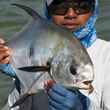
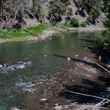

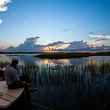



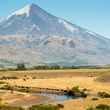
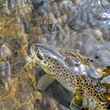



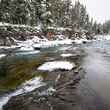





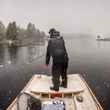



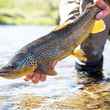



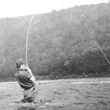
Comments
Oregon fisher replied on Permalink
Of course the complement of this development, not mentioned in the article, is this warming is causing the sourthern range of salmonids to become less and less favorable. Every problem facing the Northwest's salmon is worsened by this warming...the trajectory is not good.
Steve Sisa replied on Permalink
Why do you feel it necessary to insert anti-Trump garbage int the middle of this article? It has little to do, factually, with the research that has been going on for quite some time. Just a political stick in the eye.
Chad Shmukler replied on Permalink
Pages